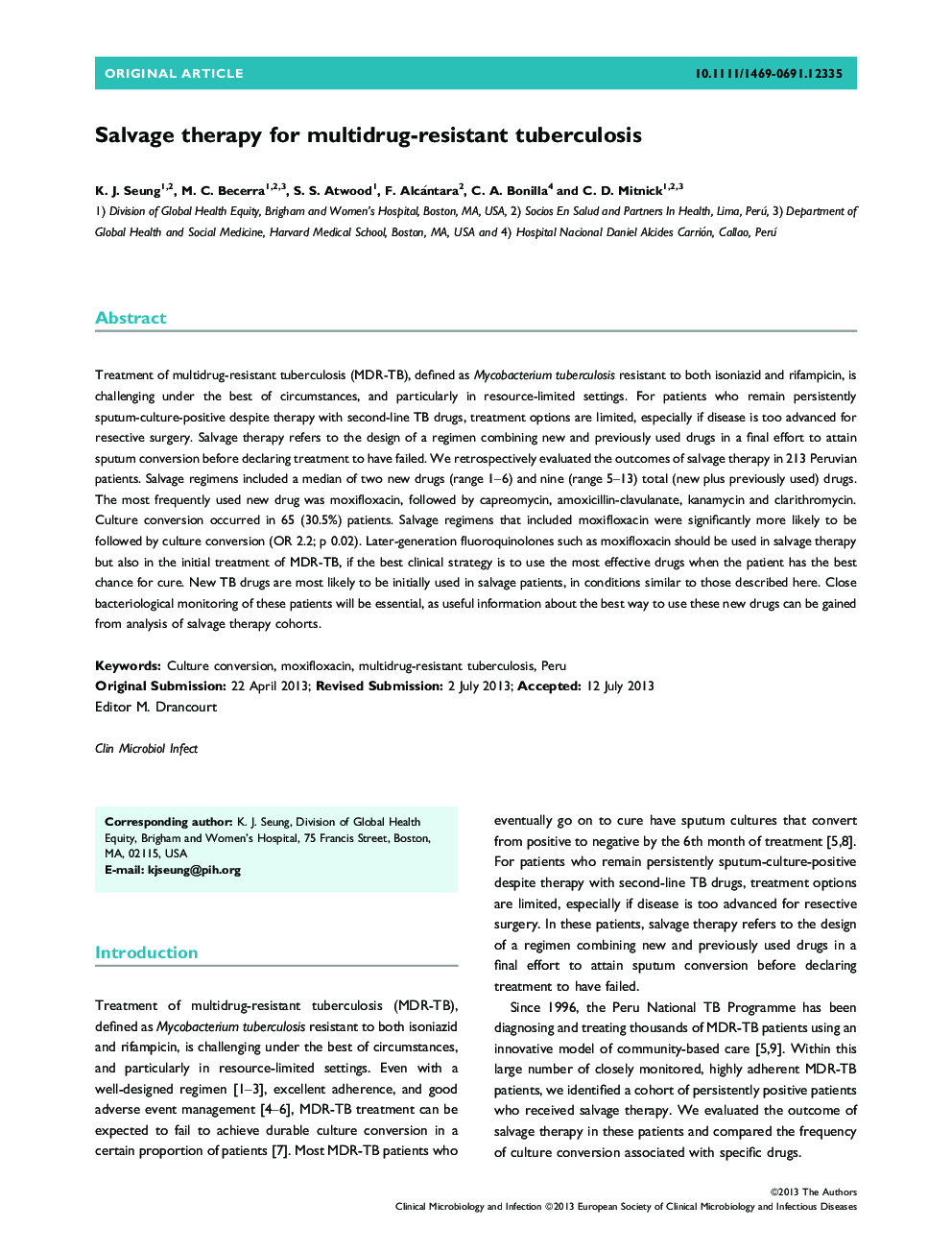| Article ID | Journal | Published Year | Pages | File Type |
|---|---|---|---|---|
| 6130350 | Clinical Microbiology and Infection | 2014 | 6 Pages |
Abstract
Treatment of multidrug-resistant tuberculosis (MDR-TB), defined as Mycobacterium tuberculosis resistant to both isoniazid and rifampicin, is challenging under the best of circumstances, and particularly in resource-limited settings. For patients who remain persistently sputum-culture-positive despite therapy with second-line TB drugs, treatment options are limited, especially if disease is too advanced for resective surgery. Salvage therapy refers to the design of a regimen combining new and previously used drugs in a final effort to attain sputum conversion before declaring treatment to have failed. We retrospectively evaluated the outcomes of salvage therapy in 213 Peruvian patients. Salvage regimens included a median of two new drugs (range 1-6) and nine (range 5-13) total (new plus previously used) drugs. The most frequently used new drug was moxifloxacin, followed by capreomycin, amoxicillin-clavulanate, kanamycin and clarithromycin. Culture conversion occurred in 65 (30.5%) patients. Salvage regimens that included moxifloxacin were significantly more likely to be followed by culture conversion (OR 2.2; p 0.02). Later-generation fluoroquinolones such as moxifloxacin should be used in salvage therapy but also in the initial treatment of MDR-TB, if the best clinical strategy is to use the most effective drugs when the patient has the best chance for cure. New TB drugs are most likely to be initially used in salvage patients, in conditions similar to those described here. Close bacteriological monitoring of these patients will be essential, as useful information about the best way to use these new drugs can be gained from analysis of salvage therapy cohorts.
Related Topics
Life Sciences
Immunology and Microbiology
Microbiology
Authors
K.J. Seung, M.C. Becerra, S.S. Atwood, F. Alcántara, C.A. Bonilla, C.D. Mitnick,
